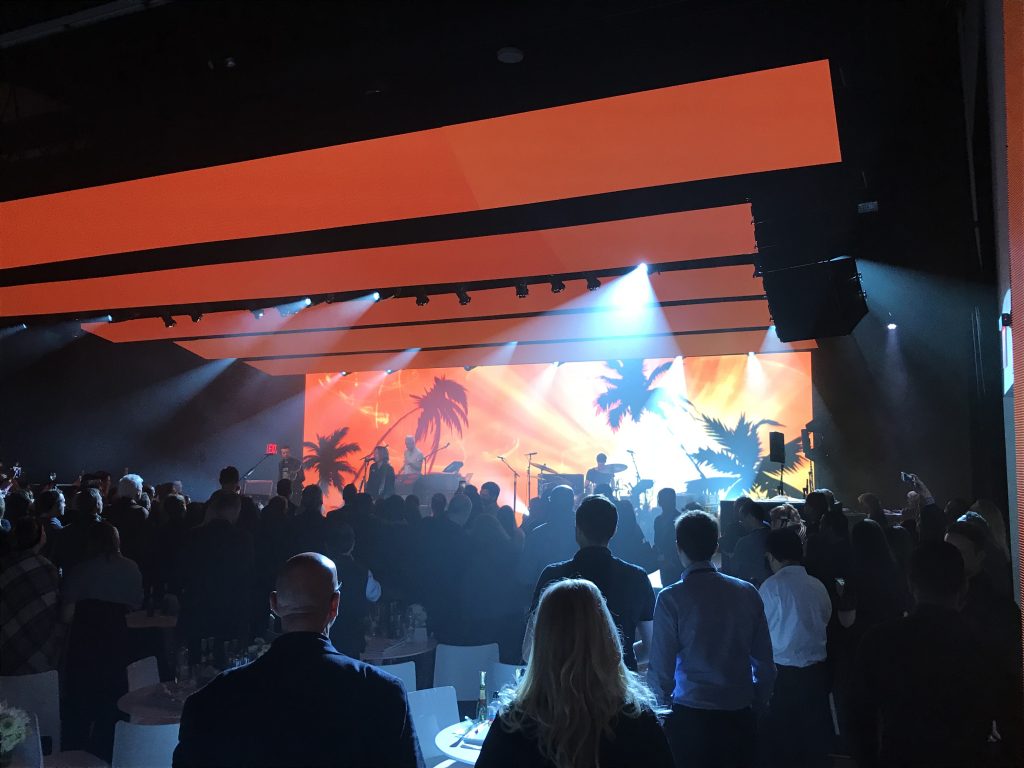5 Tips to Make the Most of your LED Investment
The date is set. The venue is booked. Speakers are confirmed.
You have a vision for your event and LED displays are part of the plan.

Photo provided by EPN Member CPR MultiMedia Solutions.
But, how do you bring your idea to life? We asked Rental and Staging Network (EPN) member companies to share their top five tips for getting the most out of LEDs at your next event.
EPN is comprised of more than 25 of the finest live-event staging companies; EPN members serve every major market in the United States, Canada and Mexico with best-in-class event AV.
EPN members share advice on incorporating LEDs into your next event.
Tip #1: Rely on Your Provider’s Expertise
With so many LED configurations to choose from, the decision can be overwhelming. Turn your event into a vibrant and exciting experience by selecting the right LED solution for your message. Begin by asking your AV provider for recommendations. Do you need an LED wall, screen or panels? Most providers have a few options when it comes to selecting modular LED video tiles for display formats like walls, pillars, wraps, curves and displays.
“Your AV provider is an expert and will help you make the right choice by explaining ‘why’ one format is better suited for your event,” Jack De Vries, director of sales and marketing at Showcore, said.
Tip #2: Consider the Venue Size
To get the most out of your LED investment, choose customized features based on the viewing distance of the audience, size of the crowd and venue, as well as the goal of the event and signage.
“Ask your vendor to calculate the exact pixel counts the product will contain once assembled,” Jeff Studley, president of CPR MultiMedia Solutions, recommends. “The most important thing to consider is the distance to the viewer.”
LED displays are available in different configurations. However, to ensure the effectiveness of your LED signs, you need to choose the right size. “Our rule of thumb is that 1 mm. of pitch (distance of one-pixel center to the adjacent pixel center) should equal one meter (approximately a yard) of distance to the viewer,” Studley added. “The lower the pitch number, the higher the resolution.”
Tip #3: Account for Timing and Space
When using LEDs—whether it’s a video wall across the ceiling or a tunnel creating a striking entrance—the possibilities are endless, but it’s important to consider space limitations and account for setup time. LEDs are usually the preferred choice when space is limited, but large-format surfaces are desired. Depending on what type of LED screen you choose, installation and tear-down methods will vary.
LED screen mobility can play a large part in improving the viewing experience. In some cases, it may be best to use an LED screen that can be easily moved, especially in closer viewing environments.
Work with your AV team to develop a timeline for setup and breakdown—one that includes time for the unexpected like a down tile. One of the most crucial things to think about when renting an LED wall is considering the level of support that the event production partner will provide.
Tip #4: Get a Head Start on Graphic Design
When done right, LED displays are incredibly impactful. That’s why it’s important to begin working with your event production team early. Get the design specs, request a template and involve the techs from the very beginning—that will ensure that you avoid any last-minute hiccups. Your event team may even provide graphic design services at a nominal fee.
Content is the driver of the experience. “Before building content, ask for resolution sizes, output limitations and switching capabilities, De Vries said. “That limits scaling on-site, cutting of important text or images or worse—content that doesn’t fit the file type necessary for deployment.”
To get the biggest impact from your LED message, Studley also recommends avoiding small fonts, white backgrounds and very thin horizontal lines, which make the pixels stand out.
Tip #5: Budget for an LED Tech On-site
All electronic technology can be finicky, but LEDs can be especially tricky. That’s why it’s important to budget for an on-site tech in case something goes wrong.
“Having a tech on site—someone who is skilled at using the specific LED product that you are renting is recommended,” Studley said. “Something like a ‘down tile’ at a live event makes a negative impression and needs to be changed right away.”
If you underspend on AV and the event doesn’t run smoothly, your attendees are going to remember what went wrong, not the message you were trying to convey.
De Vries says it’s also important to ask about your provider’s quality control plan for the technology the company carries. “Many products hold the same ‘LED’ name, but there are so many differences in the innerworkings of the products—from manufacturer to manufacturer,” he said. “And they are more complicated than a standard projection surface.”
Get the Most Out of Your LED Display
LEDs have become a standard way of displaying content at trade shows, galas, meetings and events. The picture is clear, the integration is flexible, and the hardware is more affordable than ever. LED displays are an incredibly efficient way to create high-impact visuals.
Preparing content and graphics early in the planning process while being mindful of the event’s purpose and budget is the recipe for a successful event—one that guests will positively recount for years to come. To get it right, partner with an event production company that has the equipment and expertise to make your event shine.


